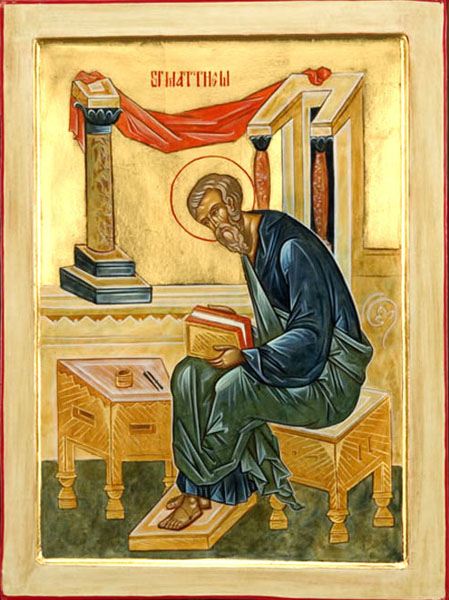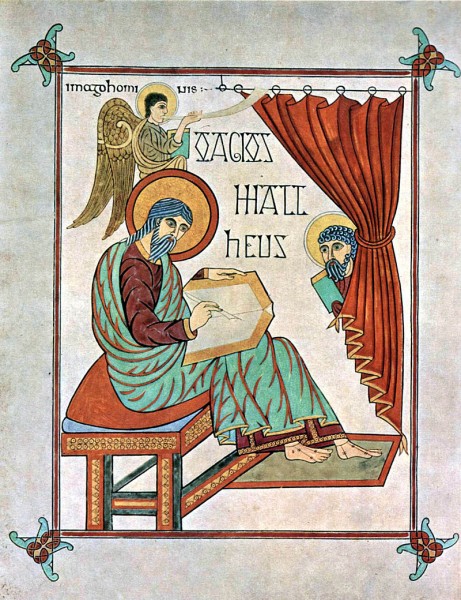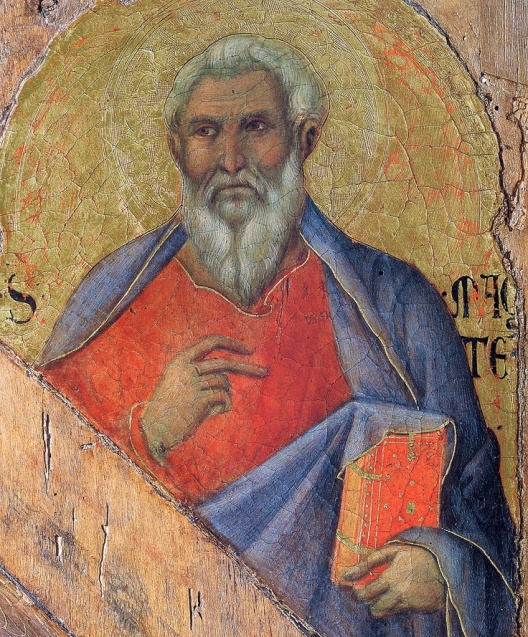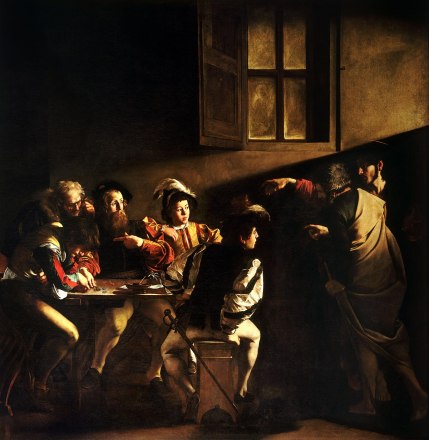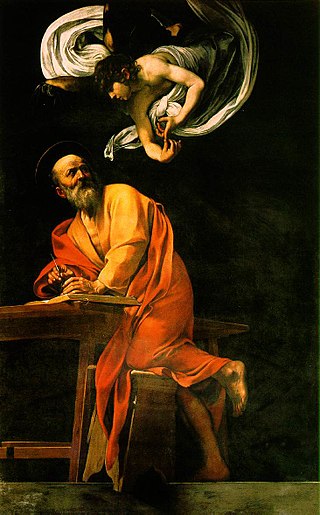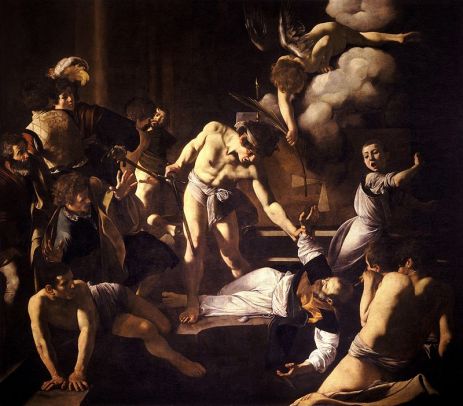Today is the Feast of St Matthew and so I present the following as part of the continuing series of featuring saints of the Roman canon.
St Matthew has long, wavy, white beard and close-cropped hair and as a writer of a gospel usually holds a book. Matthew may sometimes be shown with a winged man, the symbol most commonly (though not always!) associated with his Gospel, and with Hagia Sophia – Lady Wisdom – whispering the words into his ears.
The painting below is from the 17th century and is in the baroque style, by Guido Reni.
Below are two iconographic representations. The first is a modern icon in the Eastern style.
The second is a Western icon of St Matthew in the Western style of the Lindisfarne Gospels. I have written here in more detail about this style (and here, I discuss why the figure peeping out from behind the curtain might be St Luke).
And below is a gothic style rendition by Duccio.
All so far follow the generally accepted characteristics of the saint. However, there is one famous painting of St Luke which, perhaps in part bucks the trend, and it is the Calling of St Matthew by Caravaggio.
There is a dispute over which one is St Matthew, although Wikipedia (the font of all knowledge) veers towards the idea that it is the bearded man in the middle pointing to himself. Although not yet gray-haired, this does connect it (with his beard and curly hair) with other portrayals.
This painting is one of a series of three hanging in San Luis de Francesi in Rome. The others are the Inspiration of St Matthew – which is similar to the Reni above, and the Martyrdom of St Matthew.
You can read about his life in New Advent encyclopedia, here.
This is one of a series of articles written to highlight the great feasts and the saints of the Roman Canon. All are connected to a single opening essay, in which I set out principles by which we might create a canon of art for Roman Rite churches and schema that would guide the placement of such images in a church. Read it here. In these, I plan to cover the key elements of images of the saints of the Roman Canon – Eucharistic Prayer I – and the major feasts of the year. I have created the tag Canon of Art for Roman Rite to group these together, should any be interested in seeing these articles as they accumulate. For the fullest presentation of the principles of sacred art for the liturgy, take the Master’s of Sacred Arts, www.Pontifex.University.


